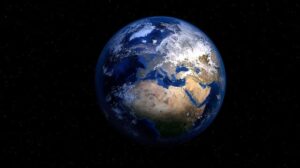Recent scientific advancements have shed light on a previously uncharted chapter of Greenland’s history, revealing that the island’s ice-covered center once supported a lush tundra ecosystem. This discovery, published in the Proceedings of the National Academy of Sciences, challenges long-held assumptions about the stability of Greenland’s ice sheet and underscores the dire consequences of ongoing climate change.
The Historical Evidence of an Ice-Free Greenland
Reexamination of Sediment from Deep Ice Cores
In a meticulous study, researchers reexamined sediment from a two-mile-deep ice core extracted in 1993. This core, stored in Colorado for over three decades, harbored well-preserved remnants of willow wood, insect parts, fungi, and even a poppy seed. These findings provide compelling evidence that Greenland’s ice sheet melted significantly within the last million years, allowing a tundra landscape to flourish where glaciers now dominate.
The implications of this discovery are profound. The presence of soil and organic matter in what is currently an ice-covered region indicates that Greenland experienced extended periods of warmth and ice-free conditions. These periods, marked by the thriving of plant and animal life, suggest that the ice sheet is far more vulnerable to climatic changes than previously believed.
Past Warming Events and Tundra Ecosystems
The study’s findings corroborate earlier research that had already hinted at the fragility of Greenland’s ice. Previous studies in 2016 and 2019 questioned the notion that the ice sheet had remained stable for millions of years. However, this new evidence provides a definitive confirmation: Greenland’s ice sheet has not only melted in the past but did so to a degree that allowed for the establishment of a tundra ecosystem.
Implications for Current Climate Change
The historical evidence of Greenland’s ice-free periods serves as a stark warning for the present. If similar warming events were to occur today, the consequences could be catastrophic. Researchers estimate that the complete melting of Greenland’s ice sheet could contribute to a sea-level rise of approximately 23 feet. Such a rise in sea levels would have far-reaching impacts, threatening coastal cities across the globe, including major urban centers like Boston, New York, and Mumbai.
The Vulnerability of Greenland’s Ice Sheet
Human-Induced Climate Change and Its Impact
The study’s revelations highlight the pressing threat posed by human-induced climate change. The rapid warming observed in recent decades is putting unprecedented pressure on Greenland’s ice sheet, accelerating its melting. This accelerated melting could trigger a chain reaction, leading to a significant rise in global sea levels.
Consequences of a 23-Foot Sea-Level Rise
A 23-foot rise in sea levels would not only inundate coastal cities but also displace millions of people, disrupt economies, and lead to widespread ecological damage. The infrastructure of cities like Boston and New York, already grappling with rising sea levels, would be severely compromised. The financial and human costs of such a scenario are almost incalculable, emphasizing the urgent need for immediate action to curb greenhouse gas emissions and mitigate the effects of climate change.
Urgency of Climate Action
Lessons from Greenland’s Geological Past
The geological past of Greenland offers critical lessons for today’s climate crisis. The ability of Greenland’s ice sheet to melt during past warming periods indicates that current trends could push the planet toward a similar state. The past is a powerful predictor of the future, and the evidence suggests that without significant intervention, the ice-free conditions that once allowed tundra to thrive could return, with devastating global consequences.
The Need for Global Cooperation and Policy Change
To prevent the catastrophic outcomes of unchecked climate change, global cooperation is essential. Governments, businesses, and individuals must work together to reduce carbon emissions, transition to renewable energy sources, and implement policies that promote sustainability. The study of Greenland’s past serves as a powerful reminder of the consequences of inaction.
Conclusion
The groundbreaking study revealing Greenland’s ice-free past is more than a historical curiosity; it is a dire warning of the potential future awaiting the planet. The evidence of a once-lush tundra ecosystem in Greenland’s center underscores the vulnerability of the ice sheet and the pressing need to address climate change. As we stand at a crossroads, the lessons from Greenland’s geological history must inform our actions today. Only through immediate and sustained efforts can we hope to mitigate the impacts of climate change and preserve the stability of our global environment.




